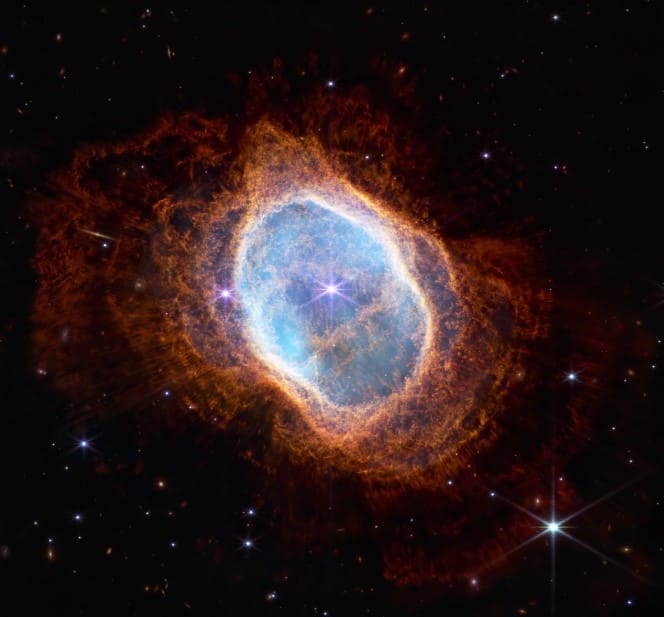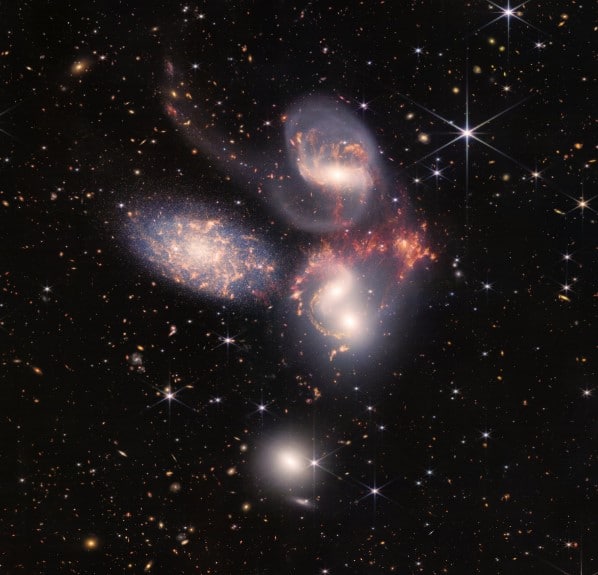New Delhi: “A picture is worth a thousand worlds,” Google said on Tuesday (July 12, 2022) as it celebrated the deepest infrared photo ever taken of the universe by NASA’s James Webb Space Telescope with a special doodle. The US space agency on Tuesday released the first full-colour, high-resolution photos from the largest, most powerful observatory ever launched into space to see the dawn of the universe with greater clarity than ever before. was designed.
The first photos, which took weeks to render from raw telescope data, were selected by NASA to show off the capabilities of the James Webb Space Telescope and further science missions.
Are we alone in the universe? How did we get here?
The first images from the James Webb Space Telescope help us #Unfold the Universe and answer the above questions
Today’s #Google Doodle Celebrates the deepest infrared photo ever taken of the universe https://t.co/pMopFK62KE pic.twitter.com/CIuvEiBT1z— Google Doodles (@GoogleDoodles) 12 July 2022
Nearly two decades in the making, the $9 billion infrared telescope was launched on December 25, 2021, and reached its destination in solar orbit about 1 million miles from Earth a month later. With Webb after spending months remotely aligning its mirrors and calibrating its instruments, scientists are exploring the evolution of galaxies, the life cycles of stars, the atmospheres of distant exoplanets, and the moons of our outer solar system. Will launch a competitively selected agenda.
It’s time. #Unfold the Universe Join us, and join the Global Watch Party for the first full-color images from the world’s most powerful space telescope, @NASAWeb, https://t.co/iLDER3c8k6 https://t.co/iLDER3c8k6— NASA (@NASA) 12 July 2022
The first image of the coronation, previewed on Monday by US President Biden But displayed with more fanfare on Tuesday, it was a “deep field” photo of a distant galaxy cluster, SMACS 0723, that shows the most detailed glimpse of the early universe ever recorded.
James Webb Space Telescope shows the galaxies of SMACS 0723
The SMACS 0723 image below shows a 4.6-billion-year-old galaxy cluster whose combined mass acts as a “gravitational lens,” distorting space to make light coming from the more distant galaxies behind it much larger. does. One of the older galaxies visible in the picture’s “background” – a composite of images of different wavelengths of light – is about 13.1 billion years old.
Outlining the vastness of the universe, the thousands of galaxies seen in the SMACS 0723 image are visible in a tiny stretch of sky the size of a grain of sand held at arm’s length by someone standing on Earth.

At least one faint galaxy measured in the thousands in the image is about 95% older than the Big Bang, the theoretical flashpoint that set in motion the expansion of the known universe about 13.8 billion years ago, NASA said.
Four other Webb subjects receiving their closeups on Tuesday included two giant clouds of gas and dust blasted into space by stellar explosions to create incubators for new stars, thousands of light-years from Earth — the Carina Nebula and the Southern Ring Nebula.
James Webb Space Telescope’s image of the Carina Nebula
New photos of the Carina Nebula reveal the contours of its vast clouds never before seen.

James Webb Space Telescope’s image of the Southern Ring Nebula
The image of the Southern Ring Nebula below shows that the dying stellar object at its center was a binary pair of stars orbiting each other.

Stephen’s Quintet image of the James Webb Space Telescope
The collection also includes fresh images of another galaxy cluster, known as Stephen’s Quintet, first discovered in 1877, which includes several galaxies described by NASA as “repeated close encounters”. locked in a cosmic dance”.

In addition to imagery, NASA presented Webb’s first spectrographic analysis of a Jupiter-sized exoplanet more than 1,100 light-years away — revealing molecular signatures of filtered light passing through its atmosphere, including the presence of water vapor. . Scientists predict the possibility of detecting water on the surface of small, rocky Earth-like exoplanets in the future.
The James Webb Space Telescope is 100 times more sensitive than the Hubble Space Telescope
The James Webb Space Telescope, which is primarily built to observe its subjects in the infrared spectrum, is about 100 times more sensitive than its 30-year-old predecessor, the Hubble Space Telescope, which operated primarily at optical and ultraviolet wavelengths. Is. The very large light-collecting surface of Webb’s primary mirror – an array of 18 hexagonal segments of gold-coated beryllium metal – enables it to observe objects at greater distances than any other telescope, thus further in time. . Its infrared optics allow Webb to detect a wide range of celestial objects and see through clouds of dust and gas that obscure light in the visible spectrum.
All five of Webb’s initial targets were previously known to scientists, but NASA officials said that Webb’s early imagery proved that it worked as designed, better than expected, while literally covering its subjects completely. Captures in new light.
The Webb Telescope is an international collaboration led by NASA in partnership with European and Canadian space agencies.
(With input from agencies. Image credit: NASA)